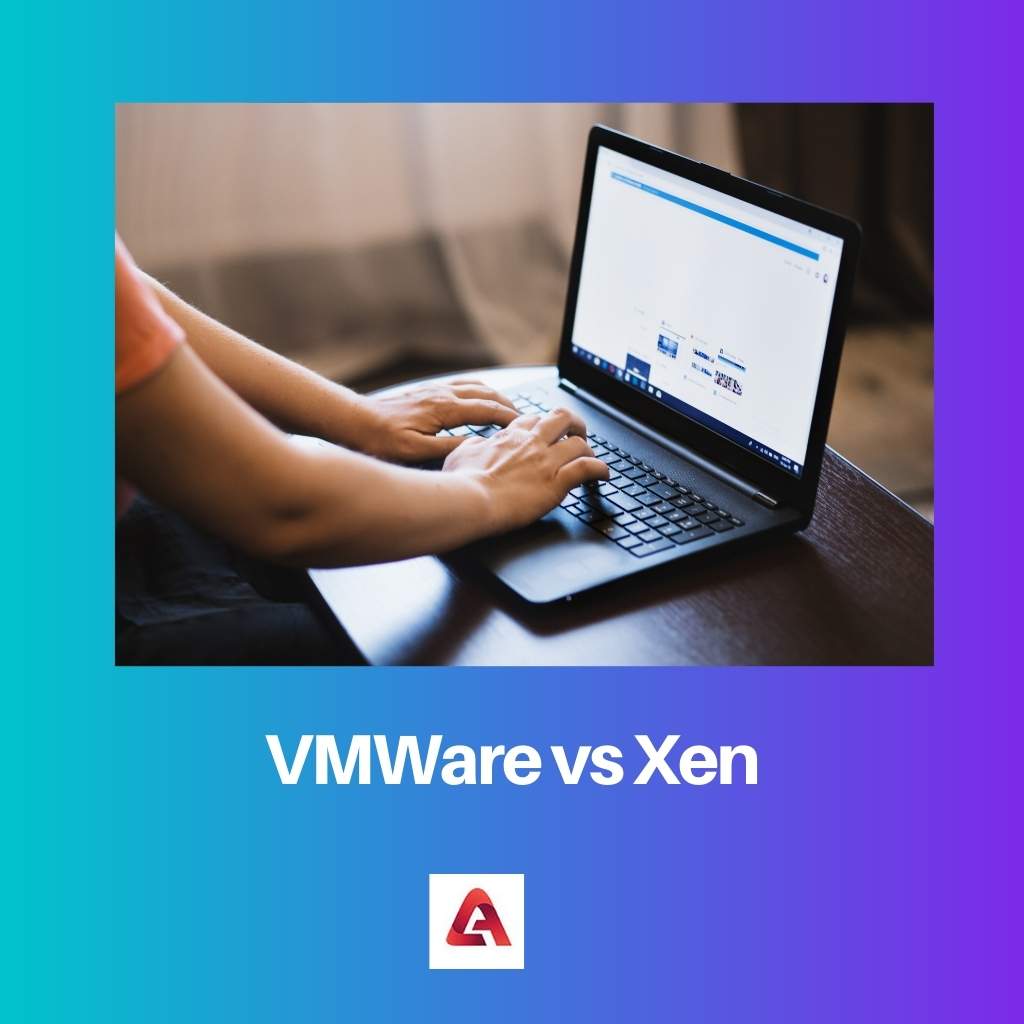Virtualization is quite a famous technique or a process that makes an effect with the help of some IT services that are attached to outmoded hardware.
The process can be distinguished further into three types – Data Virtualization, Desktop Virtualization, and Server Virtualization.
All three processes are different from each other, whereas VMWare and Xen are the two products of Server Visualization.
Key Takeaways
- VMware provides a more user-friendly interface, while Xen offers better performance and scalability.
- Xen is open-source software, making it more cost-effective, whereas VMware requires purchasing licenses.
- VMware supports a wider range of guest operating systems, whereas Xen mainly focuses on Linux distributions.
VMWare vs Xen
The difference between VMWare and Xen is that VMWare is not an open-source visualization. Instead, it provides the software to the x-86 compatible computers. Also, VMWare doesn’t provide much support in graphics and is way more limited. Whereas comparatively on the other hand, Xen is an open-source visualization that also provides good comprehensive graphics.

VMWare is always mistaken as the product or the example of server visualization. Instead, it is an American-based company that works in the field of cloud computing and virtualization technology.
The company was established around 33 years ago, in the year 1988. The VMWare headquarters is situated in Palo Alto, California, U.S.A.
Xen is a hypervisor that was initially released in the year 2003 and got its stable release in the year April 2021.
It provides services to the users and connects multiple operating systems to work on single computer hardware simultaneously. Xen was developed by the Linux Foundation and Intel Corporation.
Comparison Table
| Parameters of Comparison | VMWare | Xen |
|---|---|---|
| Open-source | No, it is not | Yes, it is |
| Dynamic Resource Allocation | Yes | No |
| Target Audience | For medium or small user | For personal or small user |
| User-Friendly Management | Complex and difficult | Bit easy |
| Installation and Configuration | Complex process | Easy |
| Graphics Support | Limited and comprehensive | Better quality |
| Host Server Management | It is custom grown | It is enterprise-ready |
| Host server limits | Quite complicated | Approximation or maximum up to 1000 |
| Licensing and Pricing | Hefty price excluding licensing | Free in cost |
| Support for Solaris, MS-DOS, Sun Java Desktop System | Support | Do not support |
What is VMWare?
VMWare is a company that is based or set up in America. The company works in the field of cloud computing and virtualization technology.
VMWare has its headquarters situated in Palo Alto, California, U.S.A. VMWare is recognized as a successful company for introducing virtualization x-86 architecture.
The company was founded in the year 1998 by some brilliant minds are – Mendel Rosenblum, Diane Greene, Scott Devine, Ellen Wang, and Edouard Bugnion.
The company VMWare has created many products and launched them in the market, and the names of them are – VMWare vSphere, VMWare ESXi, VMWare Fusion, VMWare Player, VMWare ThinApp, VMWare View and VMWare Infrastructure.

What is Xen?
Xen is also known as Xen Project. It is a type-1 hypervisor and allows multiple operating systems to compete on single computer hardware simultaneously.
The developing idea of the Xen project was by the University of Cambridge Computer Laboratory, and at present, it is being developed by Linux Foundation along with Intel Corporation.
The hypervisor got its initial release in the year 2003, and its stable release was in April 2021. The hypervisor provides its licensing and pricing free of cost to its user.
It was open-source software. Also, the graphics support provided by it was quite better and good compared to that of VMWare.
Main Differences Between VMWare and Xen
- VMware is not an open-source visualization, whereas, comparatively, on the other hand, Xen is an open-source visualization.
- The feature of Dynamic Resource Allocation is one which is provided by VMWare while comparatively, on the other hand, this feature isn’t provided by Xen.
- The target audience of VMWare is the personal user, small user, and medium user, whereas comparatively, on the other hand, the target audience for Xen is the small and medium users.
- The user-friendly management of VMWare is quite complex and difficult, whereas comparatively, on the other hand, the user-friendly management of Xen is a bit easy.
- The installation and configuration process of the VMWare is a bit complicated and clumsy process whereas comparatively, on the other hand, the installation and configuration process for the Xen is quite an easy sorting process.
- The graphics support provided by VMWare is very limited and comprehensive, whereas comparatively, on the other side, the graphics support provided by Xen is of very good quality.
- The host-server management of the VMWare is custom grown, and also, it doesn’t support Linux, UNIX, POSIX. The management system of VMWare uses Busy Box to deliver a shell environment so that users can work. Whereas comparatively, on the other hand, the host-server management of Xen is based on enterprise-ready, which delivers all the necessary capabilities to create and manage virtualization.
- The host server limit for VMWare is a bit complicated, whereas comparatively, on the other hand, the host server limit for Xen is a maximum of up to 1000.
- The licensing and pricing provided by VMWare come with a hefty price, excluding the cost for licensing, which is to be taken additionally, whereas comparatively, on the other hand, the licensing and pricing for Xen is extremely free of cost.
- VMWare supports the MS-DOS, Sun Java, and Solaris desktop system, whereas, comparatively, on the other hand, Xen doesn’t support the MS-DOS, Sun Java, and Solaris desktop system.
- https://www.researchgate.net/profile/Hasan-Fayyad/publication/261411692_Benchmarking_the_Performance_of_Microsoft_Hyper-V_server_VMware_ESXi_and_Xen_Hypervisors/links/54248b960cf238c6ea702e7e/Benchmarking-the-Performance-of-Microsoft-Hyper-V-server-VMware-ESXi-and-Xen-Hypervisors.pdf
- https://dl.acm.org/doi/abs/10.1145/1064979.1064984




